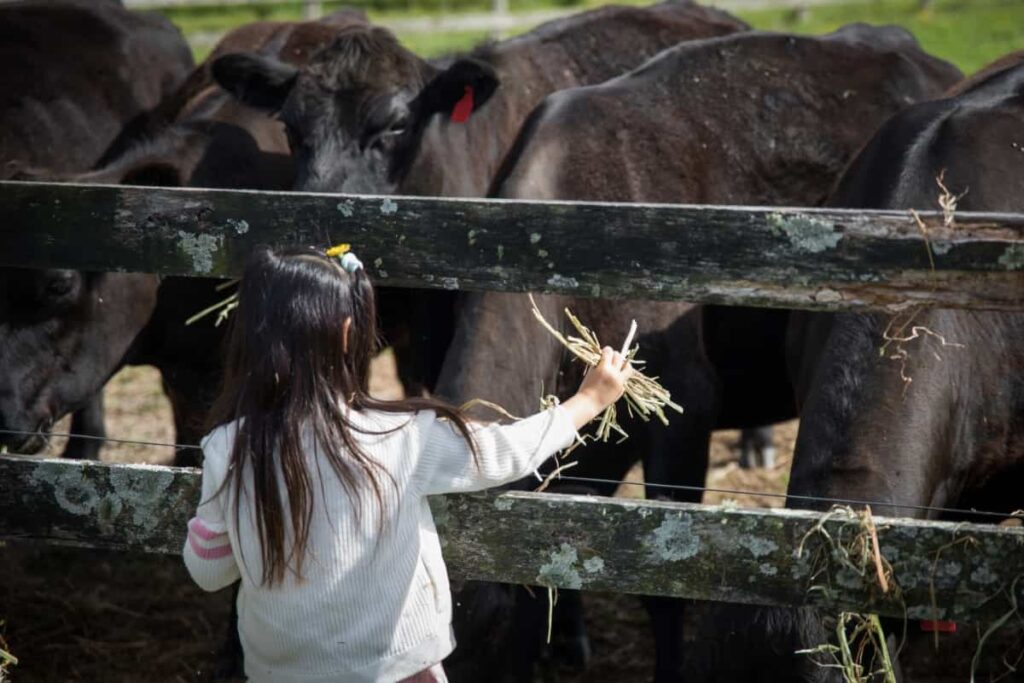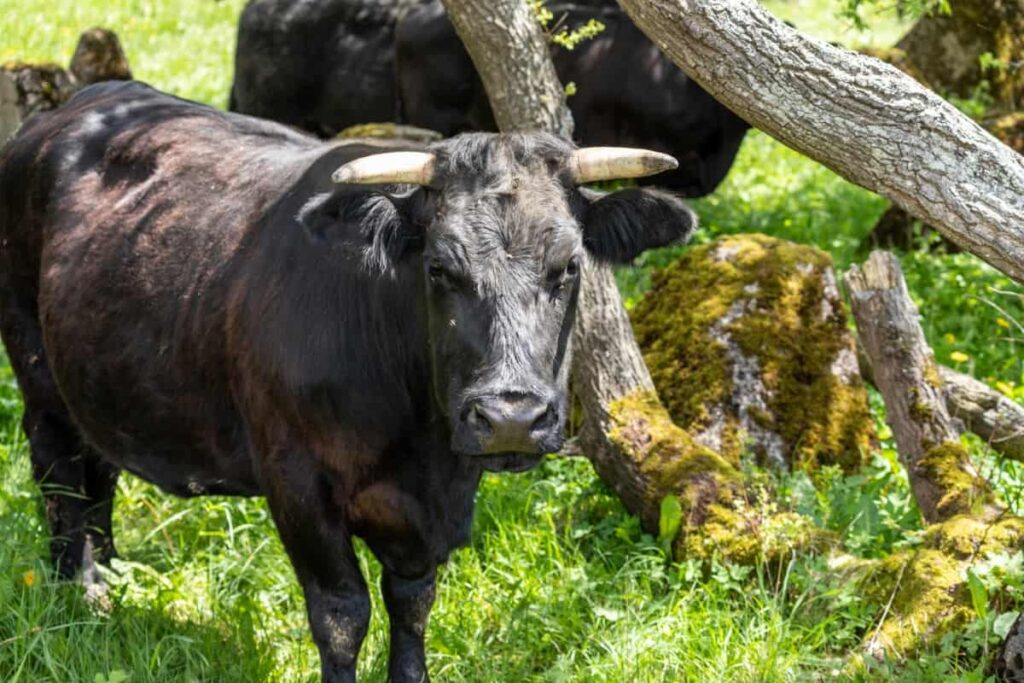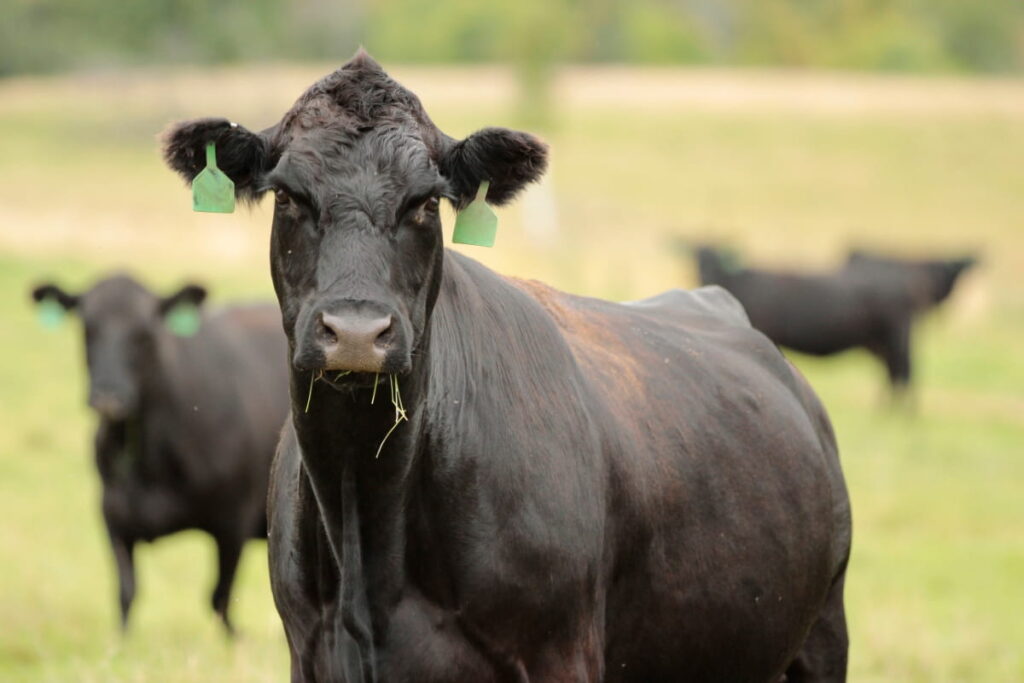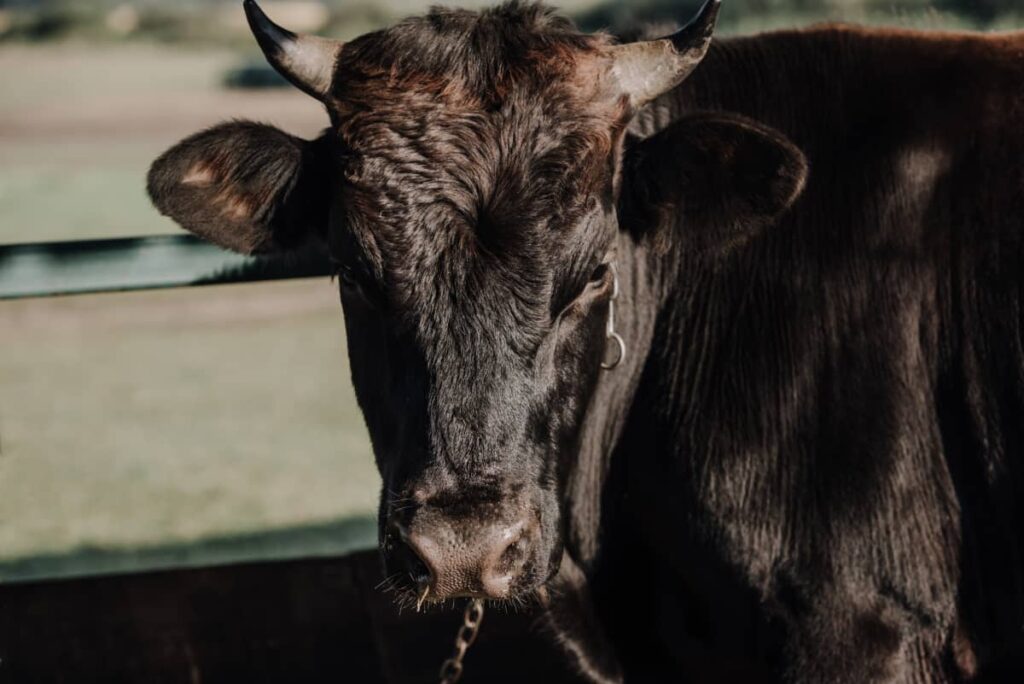Wagyu is the collective name for the four principal Japanese breeds of beef cattle. These premium Japanese beef cattle are known for their exquisite flavor, making them highly sought after in the culinary world. Wagyu cattle have a reputation for being relatively low-maintenance animals, making them easier to care for than other breeds.

Breeding and Genetics
When it comes to breeding, selecting the right bulls and cows with desirable traits is key. By carefully choosing breeding pairs based on their genetic makeup, you can enhance characteristics such as marbling, tenderness, and overall meat quality. Mature cows weigh in at 450-560 kg, and bulls reach up to an impressive 940 kg.
Genetics also influence factors like growth rate and disease resistance in Wagyu cattle. Through selective breeding practices, farmers can improve the herd’s overall health and productivity over time. It’s essential to work closely with veterinarians and experts to develop a sound breeding program that aligns with your goals for producing top-quality Wagyu beef.
Nutrition and Feeding Practices
Wagyu cattle have specific dietary requirements that differ from other breeds, necessitating a balanced diet rich in quality forages and grains. Ensuring a well-rounded nutrition plan is essential for producing high-quality beef with the marbling characteristic that Wagyu is renowned for.
Feeding practices should be meticulously planned to maintain the health of the animals while maximizing growth and development. Quality hay, pasture grass, supplemented with specially formulated grains, and mineral supplements are typically included in a Wagyu cattle’s diet. Providing access to clean water at all times is also vital for their overall health.
Pasture Management
Proper pasture management is essential for raising healthy Wagyu cattle. The quality of the grazing land directly impacts the animals’ health and productivity. Rotate pastures regularly to prevent overgrazing and allow time for grass regrowth. This practice helps maintain a balanced diet for the cattle and promotes sustainable land use.
In case you missed it: Beat the Heat: Ultimate Guide to Keeping Your Cattle Cool During Hot Summer Days

Ensure access to clean water sources throughout the pasture to keep your Wagyu hydrated and healthy. Adequate hydration is crucial for their overall well-being. Monitor pasture conditions regularly, paying attention to soil fertility, weed infestations, and overall grass health.
Health and Veterinary Care
Regular check-ups by qualified veterinarians help ensure early detection of any potential health issues. Vaccinations are essential to prevent diseases and maintain herd immunity. Proper nutrition is key to keeping Wagyu cattle healthy and strong. A good diet rich in nutrients promotes optimal growth and development.
Regular grooming, hoof trimming, and parasite control are important aspects of maintaining the health of Wagyu cattle. Ensuring that they have access to clean water at all times is vital for hydration and proper digestion. Prompt treatment of any injuries or illnesses is important to prevent them from escalating into more serious conditions. Creating a stress-free environment can also contribute to better overall health for Wagyu cattle, as stress can weaken their immune system.
Handling and Welfare
Providing a stress-free environment is key to ensuring the well-being of these premium animals. Gentle handling techniques should be implemented to minimize any unnecessary anxiety or fear in the cattle. Building trust between the animals and handlers is essential for a harmonious relationship. Regular health check-ups are necessary to monitor the overall health of the herd. Vaccinations, deworming, and proper nutrition play a vital role in maintaining their well-being. Comfortable bedding areas help prevent injuries and promote relaxation among cattle.
Facilities and Equipment
Ensure that your cattle have access to spacious and comfortable shelters to protect them from extreme weather conditions. Providing adequate ventilation is also essential to maintain a healthy environment. Additionally, having proper handling facilities such as chutes and pens will make tasks like vaccinations and health checks more manageable.
In case you missed it: Dexter Cattle Breed: Overview, Characteristics, Uses, Disadvantages, Diet, Weight, and Price

Equip your farm with feeding troughs designed specifically for cattle to ensure they have easy access to feed without wastage. Water sources should also be easily accessible throughout the pasture. Regular maintenance of facilities and equipment is key to ensuring smooth operation on your farm.
Marketing and Sales Strategies
Utilize social media to showcase your product visually – high-quality images and videos can entice potential customers. Consider partnering with local restaurants or specialty grocery stores that value premium products. Offering samples or hosting tasting events can help generate interest and create loyal customers.
Networking within the food industry is crucial for building connections with chefs, retailers, and distributors who may be interested in carrying your Wagyu beef products. Collaborating on promotions or special events can also help increase visibility and drive sales. By implementing these strategies tailored to the target audience, you can effectively promote and sell your premium Wagyu beef products to discerning consumers looking for top-quality meat options.
Financial Management and Investment
Understanding the costs involved in breeding, feeding, health care, and facility maintenance is essential. Making a budget that accounts for all expenses is key to staying on track financially. When creating your financial plan, consider factors like feed costs, veterinary services, equipment purchases, and marketing strategies.
In case you missed it: Maximizing Profitability through Precision Livestock Management for Cattle Farms

Investing in quality genetics and nutrition may require significant upfront capital but can yield higher returns in the long run. Researching market trends and consumer preferences can also help you make informed decisions about where to allocate your resources. Exploring potential partnerships or funding opportunities could provide additional support for expanding your Wagyu operation.
Sustainability and Ethical Considerations
It’s important to implement practices that promote environmental stewardship and animal welfare. By focusing on sustainable methods, such as rotational grazing and water conservation, you can reduce the ecological footprint of your operation. Ensuring the well-being of the cattle is essential for ethical production. Providing ample space for movement, access to clean water, and nutritious feed contributes to their overall health and happiness.
Sustainable practices such as rotational grazing can help maintain soil health and prevent overgrazing. Choosing feed sources that are locally sourced and free from harmful chemicals also contributes to the overall well-being of the cattle and the environment. Ethical considerations go beyond just providing basic needs; they extend to how the animals are handled, transported, and ultimately processed for meat production.
Respecting the natural behavior of the cattle and minimizing stress throughout their life cycle is key to producing high-quality Wagyu beef. Effective management practices are key to success in Wagyu beef production. Regular monitoring of cattle health and performance, along with timely interventions, when necessary, can help maximize productivity and profitability. By applying these factors in every aspect of production, producers can meet the growing demand for high-quality Wagyu beef and establish a successful and sustainable operation.
Note: The images presented in this post are intended solely for representation purposes. The images are meant to serve as visual aids and should not be relied upon as accurate representations of their real-life counterparts.
- Profitable Village Farming Business Ideas in 2024
- High-Yield Aquaculture: Fast-Growing Fish for Farming
- Effective Fish Pond Construction Techniques for Beginners
- Irrigation and Water Management in Pineapple Farming
- Blossom to Harvest: Mastering Flowering and Pollination in Papaya Farming
- Pig Fattening Essentials: From Selection to Sale for Beginners
- Raising Wagyu Cattle: A Complete Guide for Premium Beef Production
- Soil Types and Their Water Holding Capacity
- Optimizing Irrigation Schedules for Coconut Groves for Enhanced Yield
